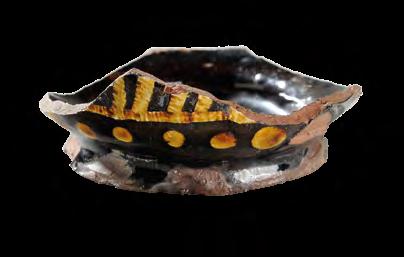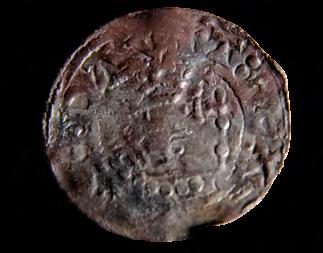
3 minute read
Medieval
Most of the medieval objects in the archaeology collections come from Monk Bretton Priory. The priory was founded in 1154 and originally housed monks of the Cluniac order. After disagreements with the Mother Church at Pontefract, the priory broke its links with the Cluniac order and became an independent Benedictine Priory in 1281. During the Dissolution of the monasteries under King Henry VIII, the Priory surrendered to the King’s commissioners in November 1538 and was stripped of many valuables, including building materials such as lead. The priory buildings were later sold and converted into a domestic dwelling, changing hands a number of times between aristocratic families. It was bought by the Barnsley Corporation in the early 20th century and is now owned by Barnsley MBC and in the guardianship of English Heritage.
There have been excavations at the site on a number of occasions, but many of the finds in the collections come from J W Walker’s excavations between 1923 and 1926. A particularly important find from Monk Bretton is a pewter chalice. The chalice was found clasped between the hands of a skeleton and the grave itself was marked with a slab incised with the image of a chalice. This suggests that the person buried with the chalice was a member of the Priory’s religious community, possibly a Prior due to the grave’s position in the northwest transept of the church.
Advertisement
There are 23 medieval floor tiles in the Monk Bretton collection. Some are complete and some fragmentary, but the majority are plainly decorated with black glaze. There are also several yellow-glazed examples and others that were decorated with floral designs. These are likely to have been part of the Priory structure when it was a religious building. The same is true of the fragments of window glass, much of which is decorated with thin, geometric patterns in red-brown paint. There is also a substantial amount of pottery from Monk Bretton, including a partially complete yellow-glazed candlestick and a brown-glazed two-handled mug decorated with yellow spots. Much of this pottery is thought to date to the period after the Dissolution when the Priory was used as a domestic dwelling.
Medieval finds from other sites include a silver penny of David of Scotland (known as ‘King of the Scots’) dating from around AD 1141, found at Cudworth. A carved stone head from the former Holyrood Catholic Church in Barnsley is also thought to be medieval.
Two-handled mug in brown glaze with yellow spots, Monk Bretton Priory, AD 1500 – 1600 BMBC.TH.1378
Yellow-glazed ceramic floor tile, Monk Bretton Priory, AD 1200 – 1300 BMBC.TH.1256
Painted wall plaster, Monk Bretton Priory, AD 1200 – 1300 BMBC.TH.1227 Black-glazed ceramic floor tile, Monk Bretton Priory, AD 1200 – 1300 BMBC.TH.1246
Whole ceramic floor tile, Monk Bretton Priory, AD 1200 – 1300 BMBC.TH.1247
Decorative window glass, Monk Bretton Priory, AD 1200 – 1300 BMBC.TH.1201

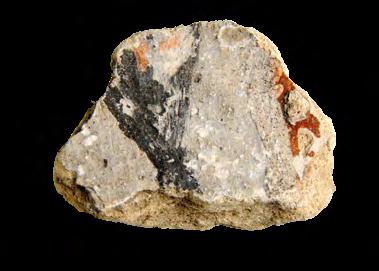



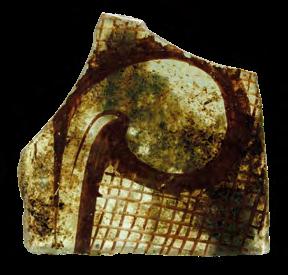
Decorative window glass, Monk Bretton Priory, AD 1200 – 1300 BMBC.TH.1202
Decorative window glass, Monk Bretton Priory, AD 1200 – 1300 BMBC.TH.1379
Base of Pewter chalice, Monk Bretton Priory, AD 1200 – 1300 BMBC.TH.1214 Decorative window glass, Monk Bretton Priory, AD 1200 – 1300 BMBC.TH.1203
Ceramic jug reconstructed, Monk Bretton Priory, AD 1200 – 1300 BMBC.TH.1380
Ceramic candlestick, Monk Bretton Priory, AD 1200 – 1300 BMBC.TH.1381


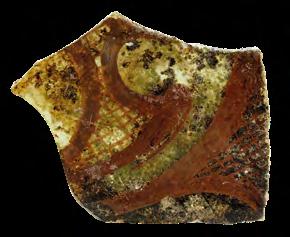
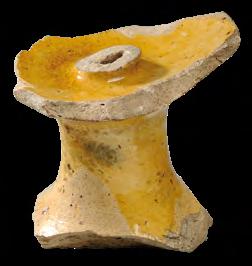

Ceramic jug handle, Monk Bretton, AD 1500 – 1600 BMBC.TH.1296
Ceramic vessel handle, Monk Bretton, AD 1500 – 1600 BMBC.TH.1286
Silver penny of David of Scotland, obverse, Cudworth, AD 1141 BMBC.TH.1382 Ceramic vessel base with yellow decoration, Monk Bretton, AD 1500 – 1600 BMBC.TH.1294
Carved stone head, Holyrood Catholic Church, Barnsley BMBC.TH.1383
Silver penny of David of Scotland, reverse, Cudworth, AD 1141 BMBC.TH.1382


